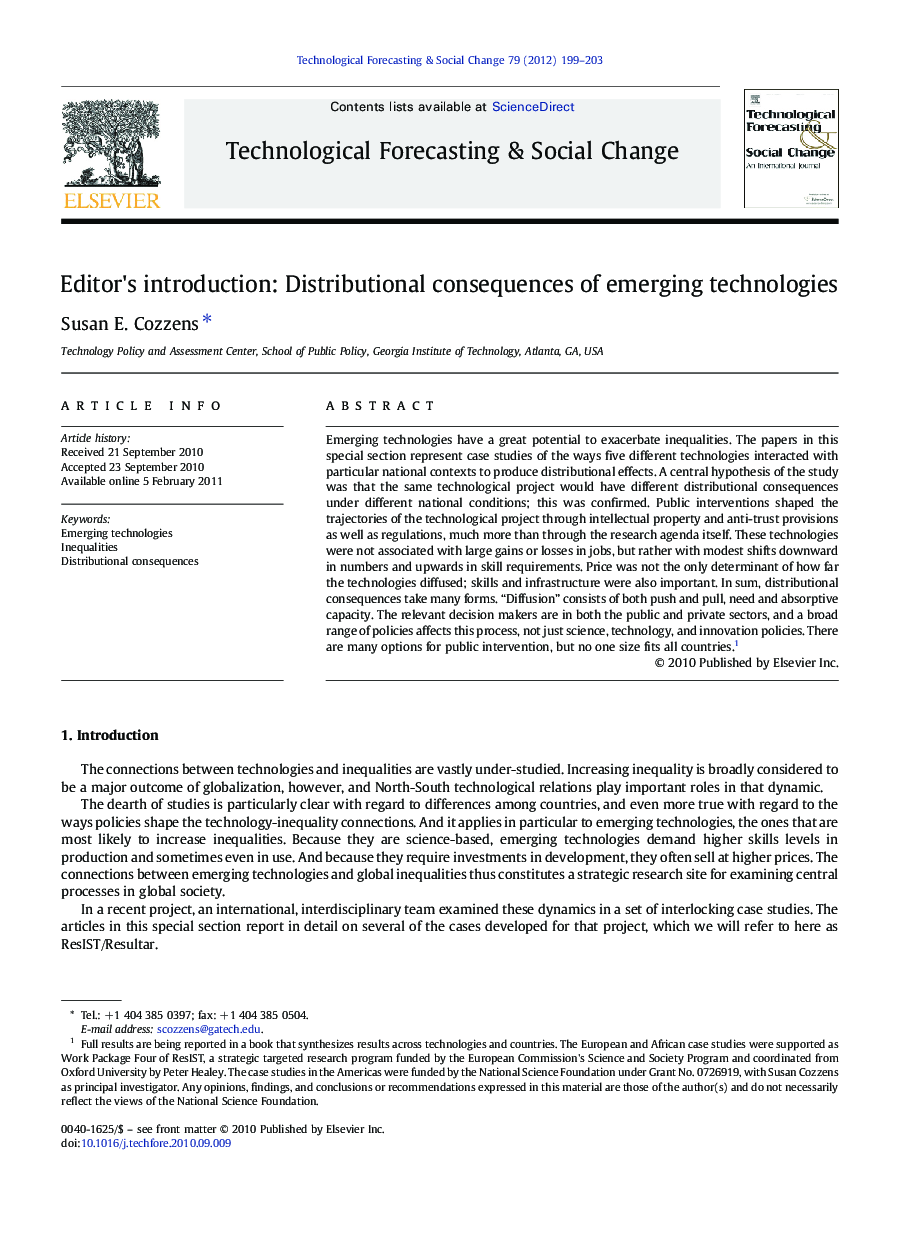| Article ID | Journal | Published Year | Pages | File Type |
|---|---|---|---|---|
| 896972 | Technological Forecasting and Social Change | 2012 | 5 Pages |
Emerging technologies have a great potential to exacerbate inequalities. The papers in this special section represent case studies of the ways five different technologies interacted with particular national contexts to produce distributional effects. A central hypothesis of the study was that the same technological project would have different distributional consequences under different national conditions; this was confirmed. Public interventions shaped the trajectories of the technological project through intellectual property and anti-trust provisions as well as regulations, much more than through the research agenda itself. These technologies were not associated with large gains or losses in jobs, but rather with modest shifts downward in numbers and upwards in skill requirements. Price was not the only determinant of how far the technologies diffused; skills and infrastructure were also important. In sum, distributional consequences take many forms. “Diffusion” consists of both push and pull, need and absorptive capacity. The relevant decision makers are in both the public and private sectors, and a broad range of policies affects this process, not just science, technology, and innovation policies. There are many options for public intervention, but no one size fits all countries.1
